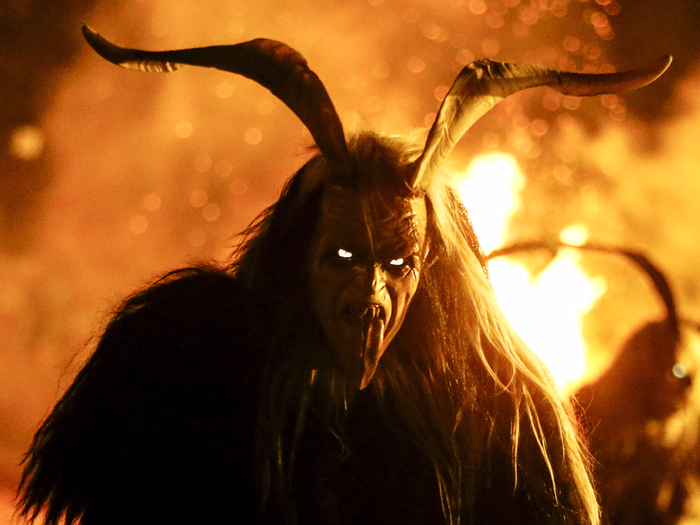
Cultural evolution can be divided into several periods, or "epochs," with each stage characterized by a particular era of change. Marquis de Condorcet argued that human civilization has evolved through 10 phases, with the French Revolution being the final epoch and destined for universal human rights. The idea is often based on the typology created by Christian Jurgenson Thomsen a Danish archaeologist.
Cultural evolution
Cultural evolution is a discipline that examines the history of human civilizations. To study long-term cultural changes, the field employs phylogenetic techniques. Language, technology, migration and cooperation are all common topics. To understand this dynamic, one must consider both the historical context and the processes that have driven cultural variation.
Scientists historians and humanists are very focused on the details of cultural variation and change. They also know the difficulties involved in formulating universal laws for history. Cultural evolutionists understand that genetic and cultural change are not the same thing. This is why a phylogenetic analysis won't be applicable to a specific case.

Concept of evoked Culture
The concept of "evoked culture" reintroduces biological aspects to culture research. It helps to identify ecological problems that can evoke certain behavior patterns. These are then passed on through generations as normative practice. These practices are favoured by selection and so proliferate. These behavior patterns are preserved in culture through generations even if their members are unaware.
The relationship between evoked and transmitted culture can be a complex one, and it can be difficult to distinguish between the two. These two types are complementary and interrelated, however. The notion of transmitted culture is useful in explaining cultural variation, especially in relation to human behavior.
Cultural evolution is affected by demographic and environmental factors
The cultural evolution of a community can be affected by both demographic and environmental factors. Climate change, famine, and disease are some of the factors that can affect cultural evolution. These factors are often ignored or not taken into account. In fact, there has been little research on the impact of short-term shocks on culture.
The environment is under tremendous pressure from human population growth. Sudan's population reached 38 million by 2006, with its livestock population increasing 51-fold to 41,000,000. The country's camel population alone jumped 179.3 million from 1980 to 2006; livestock populations increased by 49 million sheep, 50 million goats, and 17 million camels.

Musical evolution
Our culture and musical habits may be explained if we consider the origin of music. Music is a complex symbolic system, with many behaviors passed down through generations. Its survival will depend on how well cultural information survives memory bottleneck, the human neurological biases that restrict our ability to interpret rules in a system. Music that fits within our neurobiological filter is likely to survive. That should be reflected in the musical corpus at the level of the population.
Music is as fundamental as language to the human species. Its generative and structurally recursive nature allows it to be an immensely vibrant form of expression in any culture. Music can be simple adaptation, which is why it is one the most basic human traits.
FAQ
What are some of the positive aspects of pop music?
There are some things about pop culture that aren't bad. It gives people something to discuss. Pop culture also helps people express creativity. Pop culture can help artists promote their work.
Pop culture brings people together. Everyone wants to see the same shows. Everyone loves the same music. And everyone likes the same movies. Pop culture makes it easy to connect.
Not all pop culture is healthy. Many films glorify violence. Some TV programs mock people with mental disabilities. Others encourage their fans and followers to get high.
So what do we do when pop culture has negative aspects?
We need to try to avoid the bad aspects of pop culture. We should not allow it to influence our lives. It can cause problems for our health. It can even lead to criminal activity. It can also affect our relationships.
We should also think about whether pop culture is helping or hurting society. Are they promoting positive values? Are people being encouraged to do wrong things?
Finally, let us ask ourselves whether or not we are happy in the world that we live. Do we like the music we listen to? The TV shows that we watch The clothes we wear?
If we care about our future, then we have to be accountable for our actions. It is up to us to choose the kind of world that we want. We can then choose the right pop culture.
What can I do to use pop culture in my marketing strategy
You need to examine the trends in pop culture to learn how you can use it in your marketing strategy.
Let's assume, for example that you wanted a promotion to promote a new movie. What kind of promotion could you run?
You could make a trailer using clips taken from the movie. A clip could be found that features your product or service and included in the video.
Maybe you could even make a parody using footage from other films.
You could use the movie's plotline to create a promotional campaign for a product or service you were trying to promote. One example: If you are promoting a product or service that helps astronauts keep healthy while they travel through space, it might make sense to promote the product.
Promos could be run for businesses that are related to the movie's plotline. Customers who buy tickets for the movie could get free food samples from your company if you sell food.
Who invented the word Pop Music?
Frank Zappa invents the term pop music. He coined the term "pop music" to describe his musical style.
He said that he wanted music to appeal to everyone. He called his music "pop music".
Zappa also created the phrase "You know it's POP when..." which means that something is really popular if many people enjoy it. Michael Jackson's Thriller album, for example, is one of his most popular albums.
Zappa's definitions of pop music are different than the current. Pop music can include all music. But back then, only certain kinds of music were considered pop.
Why is pop music so popular
Pop music is popular because it is fun! Pop music makes you feel happy, and it gives you a lot of freedom. Pop music is a popular choice and people can think about whatever they want. They don't have to worry about what other people think. Pop music is a hugely popular genre. People enjoy songs that make their heart sing. Listening to upbeat music can help you get out of a slump. You might even find yourself singing along. Pop music has been so popular over the years because of this.
What is Tik Tok pop culture like?
The answer is yes! It's not limited to teenagers. These videos can be used by anyone to express their feelings, share life moments, and show support.
The app is used daily by more than 200 million people around the globe. This number continues to grow by millions every single day.
This makes TikTok an incredible opportunity for brands to connect with consumers and build meaningful relationships.
TikTok also has many influencers that have built huge followings. These creators create original content and engage audiences around the world.
Don't wait! Here are four ways you can take advantage of this trend.
-
Make viral content
-
Engage Influencers
-
Use Visuals Effectively
-
Creativity with Your Audience
What is popular culture in music?
Popular Music Culture takes many forms.
Music and lyrics are the main characteristics of popular music culture. It also includes the impact of visual media such as television, fashion and advertising on artists' careers, as well as public perception.
It's also the way that fans interact with their favorite musicians.
The rise of superstars - musicians who have made a name for themselves - is one aspect of popular music culture.
These celebrities often transcend genres to become cultural icons. The evolution of popular culture has been influenced by their popularity.
Other aspects of popular music culture include:
* The rise of recording technology -- from acoustic instruments and electric guitars to microphones and microphones.
* Invention of the record player and radio
* The birth of the rock 'n roll era;
* Introduction of film and TV;
* The advent of MTV and VH1;
* The creation or the Internet.
What examples are there of pop culture?
Pop Culture refers to the art form of 21st century. It encompasses all forms of popular entertainment, from music, film, TV, video games, fashion, advertising, comics, etc. This term was created by Neil Postman, author of Amusing Ourselves and Death (1985). Pop is a type of mass communication that relies on cheap tricks or formulaic devices to give the illusion of spontaneity.
He said that people don't experience true joy because they are conditioned to look for media experiences that make them feel better than others. He also argued that cultural expression has contributed to the decline in critical thinking skills among young adults.
Pop culture can also refer to popular culture and consumerism.
Statistics
- According to Dictionary.com, popular culture, or low culture as it is sometimes referred to is comprised of the “cultural activities or commercial products reflecting, suited to, or aimed at the tastes of the general masses of people” (7/21/19). (socialsci.libretexts.org)
- Latinos represent roughly 19% of the U.S. population. (npr.org)
- For example, the term hater meaning someone who strongly undermines or criticizes others, often due to pathetic jealousy, likely emerged from hip hop culture, such as the term playa hateras, used by influential rapper Biggie Smalls as early as 1995. (simplicable.com)
- [17][18][19]Definition[edit]According to author John Storey, there are various definitions of popular culture. (en.wikipedia.org)
- Less than a decade later, that statistic rose to 90% (Dager, n.d.). (socialsci.libretexts.org)
External Links
How To
What are some famous pop culture references?
In the 1960s, Americans were obsessed with space travel. Star Trek was then the most popular television show.
From 1966-1969 the original series aired over on NBC. The series starred William Shatner playing Captain Kirk, Leonard Nimoy portraying Mr. Spock and DeForest Kelley portraying Dr. McCoy. James Doohan played Scotty. Majel Barrett Roddenberry was Uhura. Nichelle Nichols was Lieutenant Nyota Uhura. Walter Koenig was Pavel Chekov. Grace Lee Whitney was Yeoman Janice Rand. (Wikipedia)
In 1967, the series was the subject of the first feature-length film. It was titled "Star Trek," released by Paramount Pictures. Robert Wise directed the movie. It featured an ensemble cast that included William Shatner and Leonard Nimoy as well as DeForest Kelley and James Doohan. (Wikipedia)
The second season of the TV series started airing in 1968. This season featured the crew travelling back in time to 1969. (Wikipedia)
The television series' third season began airing in 1971. This season introduced a new character called Commander Richard A. Morn. He was a Starfleet starfleet officer, who was born on Earth in 2063. (Wikipedia)
There was also a live TV spinoff called "Star Trek: Planet of the Apes". It aired in 1972 and 1974. (Wikipedia)
The television series premiered its fourth season in 1973. This season introduced two new characters named Lt. Ilia and Ensign Ro Laren. Marina Sirtis played them both. (Wikipedia)
The fifth season of the television series was broadcast in 1975. This was the final season before the series went off-air. (Wikipedia)
After the television series was canceled, several attempts were made to revive it. One of these was a 1977 pilot episode titled "Where No Man Has Gone Before," but it failed to find a partner network or studio. (Wikipedia)
Star Trek: New Voyages, a 1998 animated series, was also produced. It lasted 13 episodes. (Wikipedia).
After a seven-year hiatus, the sixth season of the TV series was returned in 2009. It was entitled "Enterprise". It ran for five seasons until 2013. (Wikipedia)
There were also three feature films produced during this era. The first movie was released on September 12, 1979. It was called "Star Trek: The Motion Picture." Nicholas Meyer directed it. It starred William Shatner and James Doohan as well as Leonard Nimoy and Walter Koenig. Majel Barrett Roddy and Ricardo Montalban were also featured in the film. (Wikipedia)
The two next movies were released in 1982, and 1987, respectively. They were named "Star Trek II, The Wrath of Khan" ("Star Trek III: The Search For Spock") and "Star Trek III: The Search For Spock ("Star Trek III: The Search For Spock). Nicholas Meyer directed these films. (Wikipedia)
2001 saw the premiere of the seventh season. It was titled "Encounter at Farpoint". This was the first episode without guest stars in the show’s history. (Wikipedia)
The final episode of the television series aired in 2005. It was entitled "All Good Things ...".". It was written and directed by Ronald D. Moore. David Livingston directed this film. (Wikipedia.)
Star Trek TV Show premiered 2008 with a brand new series. It was called "Trek Nation". It's currently being aired by CBS. (Wikipedia)"Trek Nation" is about a group of people from different walks of life who get together to form their version of the United Federation of Planets. Their goal: to help other worlds reach peace. (Wikipedia). "Trek Nation" is an interesting concept that shows how people from different backgrounds can come together to create something great. (YouTube Video)
It is a good idea to read books about Star Trek's timeline. You can start with the book "Star Trek Chronology" by Gary Wolfe. You can also find many other books online.